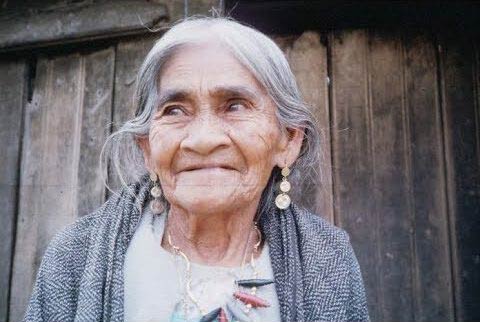Psychadelic Therapy is Not New: Working Towards Right Relationship with Indigenous Communities
“María Sabina, a traditional Mexican healer, has gone down in psychedelic history as the woman to introduce magic mushrooms to the world. A curandera from the Mazatec tribe of the Sierra foothills of Oaxaca, Sabina led healing ceremonies and rituals using hallucinogenic Psilocybe mexicana mushrooms (known to her as the “holy children”), which her peoples have used for thousands of years. Sabina was an extraordinary healer known for her ability to cure serious illnesses and connect with the divine. Her reputation spread beyond her tiny village of Huatla de Jimenez, and eventually word of her healing mushroom ceremonies reached all the way to R. Gordon Wasson, vice president of J.P. Morgan and ethnobotany enthusiast. In 1955, Wasson tracked down Sabina and (with the help of a persuasive local official) convinced her to allow him to come to her village with a photographer and participate in a healing ceremony. His journey became the subject of a famous Life magazine cover story, “Seeking the Magic Mushroom,” which introduced psilocybin to the Western world—including to Timothy Leary, who was “turned on” by Wasson’s journey and traveled to Mexico for his first of countless psychedelic trips, bringing the mushrooms back with him to research at Harvard.
That’s where the story tends to leave off, but it certainly isn’t the end. After Wasson’s article (and subsequent book) was published, Sabina’s village was inundated with tourists seeking a glimpse of God. Once regarded as a leader of her community, Sabina was blamed for the disturbance and her people began to turn against her, believing that she was selling their traditions for personal gain. Her house was burned down and her son murdered. Local officials, accusing her of selling drugs to American tourists, regularly raided her home. In 1985, she died in poverty. But Sabina’s legacy of bringing magic mushrooms to the West lives on—perhaps more powerfully than she could ever have imagined. Today, psilocybin-assisted therapy is on the precipice of FDA approval and already a billion-dollar industry. As we enter a new phase of an ancient experiment in the use of mind-expanding plant compounds for healing purposes, the story of María Sabina serves as a cautionary tale for the emerging psychedelic pharma industry—and a reminder of the long and complicated history of these medicines.
Flash forward: In a mental healthcare industry that’s made little progress in novel treatments over the past 50 years—and whose current treatments are generally agreed to be woefully inadequate—the market potential of psychedelic medicine is clear. The psychedelic drug market is projected to grow at more than 16% annually and reach $6.85 billion by 2027, with a potential $100 billion market opportunity.
But this phenomenal growth hasn’t come without its growing pains. A rising movement within the psychedelic community is voicing concern that the emerging industry is poised to repeat colonial patterns that have appropriated Indigenous knowledge and led to the destruction of the habitats and communities from which these sacred plant medicines originate—while also making these new treatments inaccessible to many of the underserved populations who need them most.
“This is a civil rights issue,” says Francoise Bourzat, a psychedelic guide, advisor to psychedelic research teams and businesses, and author of Consciousness Medicine, who has studied and practiced ceremonial mushroom healing with the Mazatecs since 1998. “Civil rights are not just the rights of people of color in this country, but also the rights of Indigenous peoples who are being exploited and mistreated, and whose knowledge is being extracted, monetized, and commodified.”
Without a commitment to equal access, critics say that the mainstream adoption of psychedelic medicine may perpetuate systemic inequalities and create barriers to access for people of color as patients, therapists, and stakeholders in psychedelic businesses.
-Carolyn Gregoire, Inside the Movement to Decolonize Psychadelic Pharma
Action Steps. What can we do?
- Make reparations: if you partake in psilocybin therapy or clinical trials; are you giving back funds and profits to the Mazatec and Oaxacan People? Here are some to consider donating to: https://www.aniwa.co/ https://www.imc.fund/
- Are you making sure your psychadelic ‘treatment’ model is accessible to BBIPOC folks- or are you adding to systemic inequality of healthcare?
- Is your medicine synthesized or was it taken from Indigenous peoples land?
- Are you genuinely acknowledging the Indigenous roots, particularly the Mazatec people and Maria Sabina each time you use psylocibin?
- If you own a psychadelic therapy corporation or company- are you inviting Indigenous folks to be stakeholders of the corporation, are they involved in policy making?
- Are you familiar with the Indigenous Rights Movement and FPIC (Free, Prior, Informed Consent)? If so, are you abiding by this?
- Are you including and centering BBIPOC folks in research, policy and training?
- Are you making sure there is accessibility to communities of color? How so?
Are you engaging in sacred reciprocity to Indigenous communities and their land-beyond profit sharing? What about making biocultural engagement efforts?
These are all important things to consider if you want to practice being in right-relationship with Indigenous plant medicine and psychadelic assisted therapy. I found this quote from Indigenous communities to be particularly powerful:
“Many Indigenous peoples have foreseen this cultural moment, and not just with respect to the commercialization of their medicines and traditions. Some also foretold the dawning of a new era of collaboration—bringing with it the opportunity to unite the best of ancestral knowledge and traditions with Western scientific and technological advances.
The Achuar peoples of the Ecuadorian Amazon have an old prophecy, that of the Eagle and the Condor. The prophecy states that humanity split into two paths many years ago: The path of the Condor (the way of the heart and intuition, represented by Native peoples of the world) and the path of the Eagle (representing the rational-scientific, progress-driven way of modern Western society).
As the prophecy goes, the 1490s (when the Spanish arrived in the Americas) signaled the beginning of a 500-year period during which the Eagle peoples would overtake the Condor peoples and drive them into extinction. During the next 500-year period, starting in 1990, the potential would arise for the two peoples to come together; for the Eagle and Condor to “fly in the same sky” once again. If we’re polite and we go slow and listen, there will be a natural exchange between cultures,” says Volat. “But it doesn’t happen at the speed of an economic feeding frenzy.”
Thank you Carolyn Gregorie for your original article and quotes that I was able to integrate throughout this post. You can find Carolyn’s full and original article here.
Why Not Every OCD Subtype Requires Accepting Uncertainty: A Compassionate Look Through the Lens of I-CBT
If you’ve been struggling with intrusive thoughts like “What if I harm my child?” or “What if I’m secretly a pedophile?”, chances are you’ve felt terrified, ashamed, and misunderstood. These thoughts—often referred to as taboo OCD themes—can feel so disturbing that...
Understanding Health Anxiety: What it is & How to Cope
If you have health anxiety, you know how exhausting it can be to live with constant worry about your health. Every new ache, sensation, or symptom can send you into a spiral of anxiety, leaving you feeling overwhelmed and scared. Health anxiety (a subtype of OCD),...
Three Acceptance and Commitment Therapy (ACT) Skills to Strengthen Your Recovery from OCD and Eating Disorders
When I was in the depths of recovery from an Eating Disorder and OCD, I was hungry (I know, pun intended) for anything that would help me cope with the distress these disorders bring. Particularly when I was beginning to challenge some of the behaviors...




